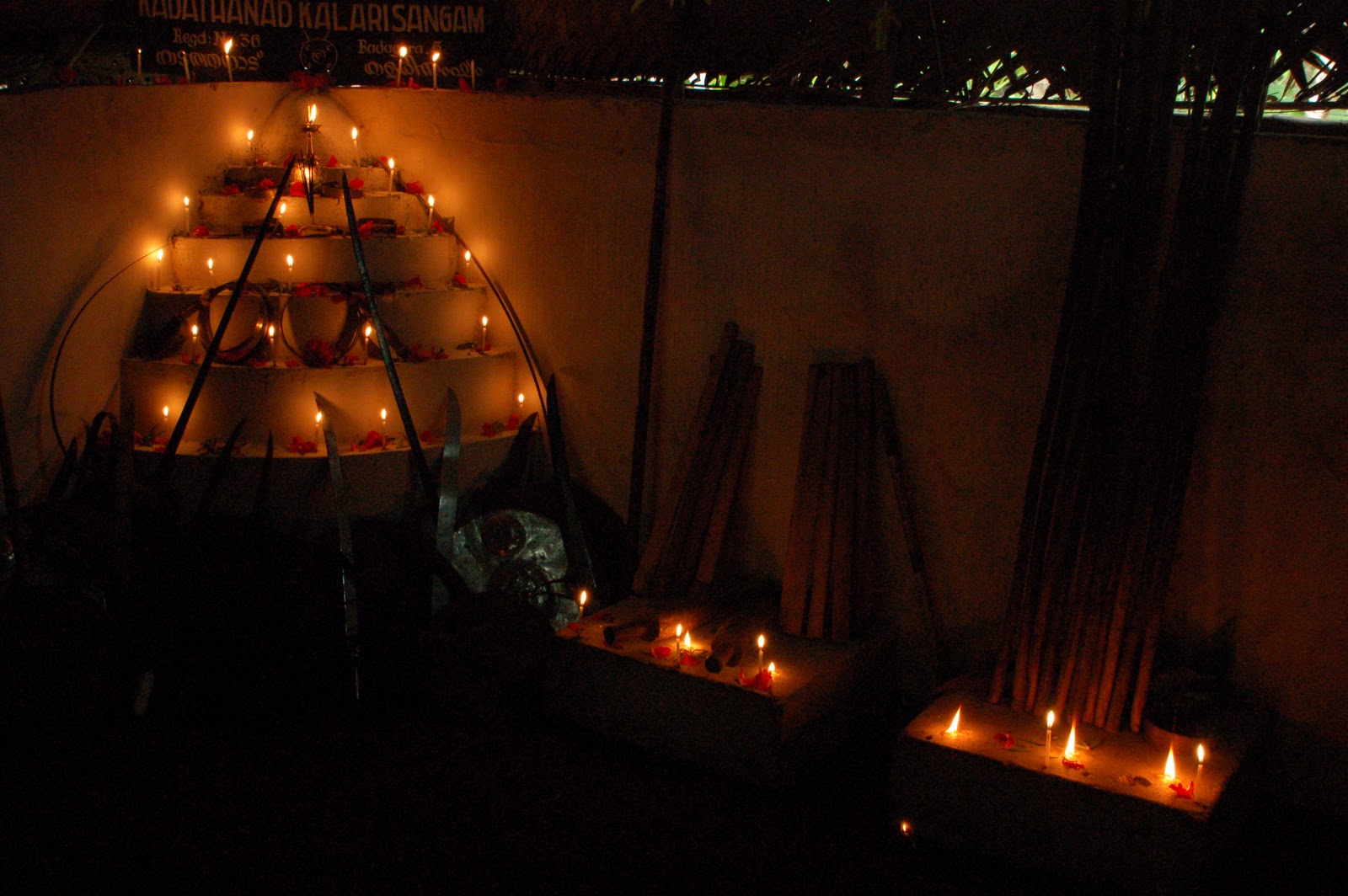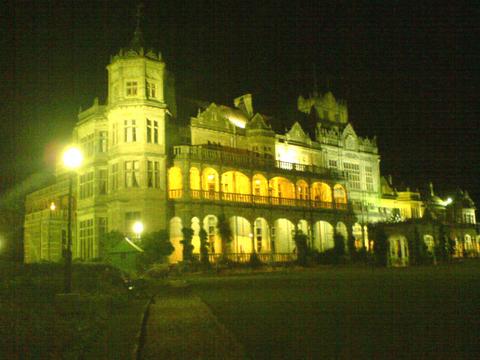Artistic Activity in Nepal as World Peace - Artist Profile
Friday, January 14, 2011
India has had a very ancient technology of producing block-printed cloth. In today's Tibetan areas, the religion that existed before Buddhism was called Bon, from which Tibetan Buddhism has borrowed many elements. Bon had a tradition of using five-coloured plain flags in their healing rituals. It appears that this tradition was combined with the Indian technology of producing block-printed designs on cloth to produce the prayer-flags of Tibetan Buddhism. (see more on this here). The other flag-style, viz, the vertical one, is called Darchor (See more on this here). Dar signifies increasing life, fortune, health and wealth and Cho refers to all sentient beings.
Lung-ta style flag with four corner animals, three deities at the top, friendship symbols at the bottom and Swastika signs for eternal well-being (See Original Image Here)
Lung-ta style Prayer-Flag with the Corner Animals Represented Only by Inscriptions of their Names - Kyung (Garuda), Druk (Dragon), Senge (Snow-Lion) and Tag (Tiger) (Photo - Maureen Drdak, Inscription read by Archana Verma)
Rival Forces Join to Symbolise Universal Friendship (See Original Image Here)
Five-Coloured flags Placed on a Peak near Mount Everest on the Tibetan Side (See Original Image Here)
However, it should be remembered that horse-design flags are only one of their kind in the wide array of prayer-flags evolved by Tibetan Buddhism. There can be prayer-flags designed around many concepts and figures such as Goddess Tara with hymns dedicated to her printed around her image and Medicine Buddha or Bhaishajyaguru flags. This Buddha is the one who teaches medical knowledge and hence, grants longevity, good health and well-being to all sentient beings.
Sanskrit Lyrics of this Hymn
Namo Arya Jnana
Sagara, Vairochana,
Vyuharajaya Tathagataya,
Arahate, Samyaksam Buddhaya,
Namo Sarva Tathagatebhyah,
Arhatebhyah,
Samyaksam Buddhebhyah,
Namo Arya Avalokite
shvaraya Bodhisattvaya,
Maha Sattvaya,
Maha Karunikaya,
Tadyathah, Om Dhara Dhara,
Dhiri Dhiri, Dhuru Dhuru
Itiye vitiye Chale Chale,
Prachale Prachale,
Kusume Kusumavaraye,
Ili Mili, Chetam Jvalam, Apnaye Svaha...
Salutations to the Noble Arahata Tathagata Buddhas who look at all beings equinamously,
Come, let's get together here
And envelope the lotus of our hearts and consciousness
With Enlightenment
(so that we lead others towards liberation from misery)..."
(Mid-Length Hymn of Avalokiteshvara, also called Hymn of 1000-armed Avalokiteshvara)
For the concept of Avalokiteshvara Bodhisattva, see here.
There is a Western artists' collective, which is titled after this concept as Lung-ta Collaborative. Maureen Drdak the painter, Andrea Clearfield the musician and Manfred Fischbeck the choreographer are members of this collective. They have worked with Tenzing Bista, a gifted Tibetan Buddhist monk who has served as the royal physician at Lho Mangthang in Nepal and who composes poetic Buddhist prayers.
Apart from the symbolic significance of this prayer for world-peace, it is also important for the students of Tibetan Buddhism, as it shows the elaborate iconography of divinities utilised in prayers and flags and also the symbolic associations of these deities with various aspects.
(Translated by Dr. Sienna Craig of Dartmouth College and Transcribed by Kunga Nyima Delotsang, a Friend of Dr. Craig in the Tibetan Community of Ithaca)
Amchi Tenzing Sangbo Bista
Prayer by Tenzing Bista in his Handwriting and in Sharpened Form (Text and Photo provided by - Maureen Drdak)
Amchi Tenzing S. Bista
(Physician at Lho Mangthang, Masthang Province, Nepal)
Boudha, Kathmandu
Nepal
Fax : 977-1-4472529
Email: hiam98@yahoo.com
Stupas at Lho Mangthang (Photo - Simon and Jessica)
Namgyal Monastery (Photo - Simon and Jessica)
Ancient Fortresses Looking over Lho Mangthang (Photo - Simon and Jessica)
Ancient Ruins in the Masthang Valley (Photo - Simon and Jessica)
Lho Mangthang in the Evening Light (Photo - Simon and Jessica)
Group of Women Praying (Photo - Simon and Jessica)
The Living Blessings of Lo
Calling of the Dieties, Part I (Wrathful)
I. Manjusri (Wisdom)
Calling of the Dieties, Part II (Peaceful)
II. Avolokiteshvara (Compassion)
Calling of the Dieties, Part III (Tibetan Orchestra)
III. Vajrapani (Action)
Epilogue (A Prayer for World Peace by Tenzin Sangbo Bista)
See Andrea Clearfield's Profile here
More resources on this project (provided by Andrea Clearfield), with musical soundtracks of the composition of Andrea Clearfield can be found on her website here.
The Living Blessings of Lo
See Manfred Fischbeck's profile here
Please see here the article by Maureen Drdak, in which she discusses her paintings based on the concept of Lung-ta and on the poetic prayer of Tenzing Bista given above.




























